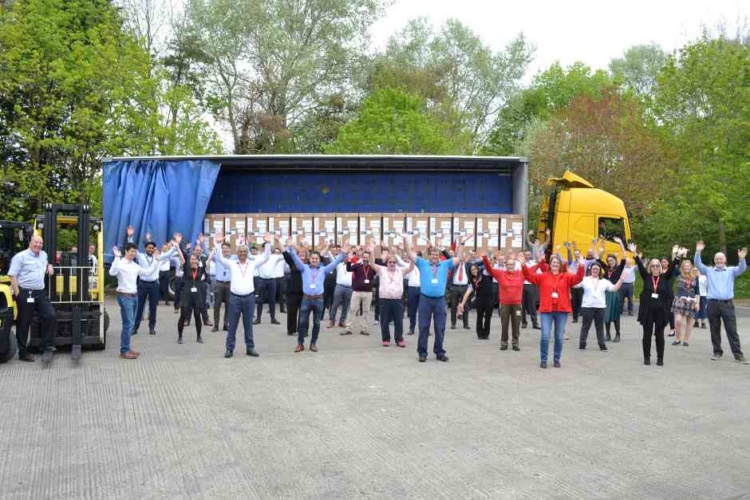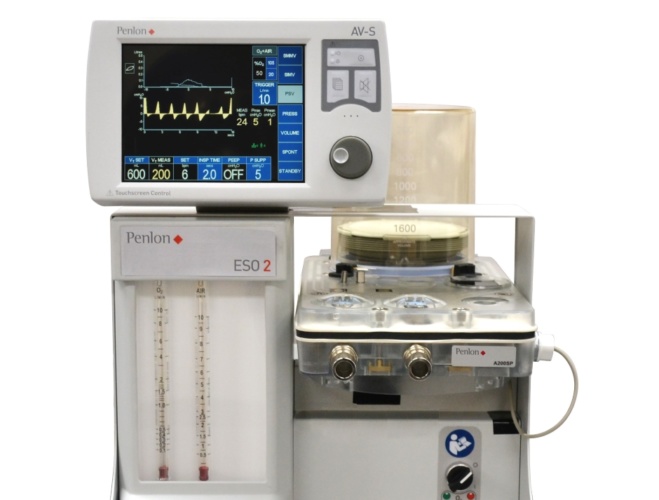 Lorenzo Bassano, who led Newton’s involvement with the VentilatorChallengeUK, shares the lessons learned from the experience and how the project is a reminder of the collective might of the UK’s engineering capability.
Lorenzo Bassano, who led Newton’s involvement with the VentilatorChallengeUK, shares the lessons learned from the experience and how the project is a reminder of the collective might of the UK’s engineering capability.
A common goal
From the start of any transformation programme, it’s critical that there is a clear and compelling purpose which is understood by everyone, from the factory floor to the boardroom. The gravity of the pandemic brought on new levels of energy and determination, and seemingly impossible tasks became the norm during VentilatorChallengeUK. Goals were achieved in record time, such as finding new sites to support the manufacturing strategy, identifying missing critical parts in the supply chain and rolling out new training to thousands of operators – all resolved in days.
Vital capacity – the story behind Penlon’s ventilator push
Ventilators: why it is so hard to produce what’s needed to tackle coronavirus
Expert Q&A: Engineering a response to COVID-19
The challenge of maintaining clarity on the purpose would have been overwhelming without an aligned and visible senior leadership team setting the right example. Having a respected team constantly reiterating “the why” meant that actions on the front-line did not diverge from the bigger-picture intention. On a daily basis, senior executives from the UK’s largest manufacturing businesses actively demonstrated their commitment to the goal by empowering their teams to raise issues and take action.

Dealing with bottlenecks
Scaling up production at pace left no time to design the perfect system; and with multiple parties all dependent on one another, understanding the true constraints of this system was challenging. Having real clarity on the bottlenecks in any manufacturing system is essential – complexity often masks real opportunity. By understanding and then focussing on the true constraints, more resource was available to be deployed effectively where it mattered. On average, the output of ventilators doubled every eight days, so the process to solve problems had to be dynamic and fast. Critical VentilatorChallengeUK issues were typically resolved within 22 hours and this speed was vital to harness the energy and momentum from the consortium.
With so many unknown factors, a key strategy was to “fail fast but small”. With a complex and rapidly changing system, often the most efficient way to unearth risks is to test it thoroughly, as soon as possible. For example, at the start of the programme, we focused on producing just ten ventilator units to give visibility of issues that would otherwise have been difficult to predict. With this clarity, we prioritised the bottle necks that were likely to have the largest impact. When this revealed that certain materials needed more detailed inspection, we designed a system in less than a day which enabled quality inspectors and operations teams to collaborate remotely, ensuring output remained high.
Effective communication and governance
Communication was vitally important to our success, and this needed to be regular and efficient, supported by the right structures, processes and tools. Transformation programmes which aim to develop control often unknowingly create a governance system which saps energy from those trying to make progress. We recognised this early on and so focussed on the outcome without becoming bogged down in unnecessary protocol.
Essential to achieving this was to embed a flat and flexible organisational structure, with regular touchpoints. In practice, this meant having no more than three reporting lines between the top and the bottom of the organisation and having forums in which all levels participated in two-way dialogue. For example, a daily 20-minute briefing at 7am kept everyone from senior executives to manufacturing analysts up to speed, which was crucial in such a dynamic and fast-paced environment.

A second focus was on using the right communication tools and processes. For example, a pop-up issue resolution system played a critical role in the programme’s success. This system, designed by Newton and coded by data management specialists Quick Release, was used to communicate across multiple businesses and locations. Accessible by mobile, tablet or computer 24 hours a day, 7 days a week; photos and other critical information could be uploaded from the manufacturing line to share knowledge across multiple parties instantaneously.
Understanding the impact of data-driven decisions was just as important on the front-line as it was at the very top of the consortium. As Head of the VentilatorChallengeUK, Dick Elsy, highlighted “Newton and Quick Release’s support in making data-driven decisions has quickly resolved any bottlenecks and meant the consortium companies have been able to get on with building the parts needed in record time”.
There was no textbook answer on how to build enough ventilators for a national pandemic of this scale. However, having key transformation principles in place – such as a clear and compelling purpose, absolute clarity on operational constraints and efficient communication – brought about success in the face of a seemingly impossible task. These elements are universally essential to any successful change programme, regardless of speed, scale or severity. The businesses behind the VentilatorChallengeUK consortium have demonstrated what can be achieved when the best of British industry is aligned behind a common goal.
Lorenzo Bassano, Business Manager at operational improvement specialists, Newton Europe
The post Key transformation principles that guided VentilatorChallengeUK appeared first on The Engineer.


